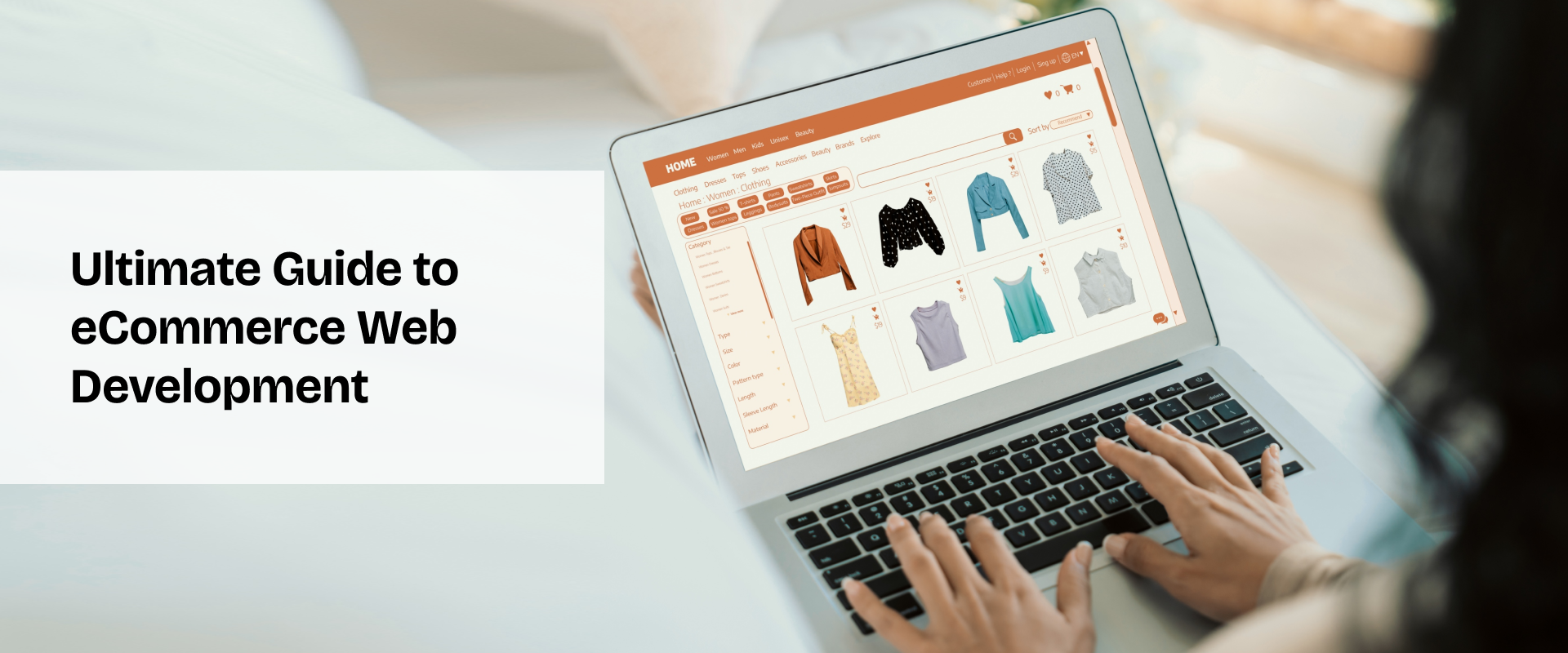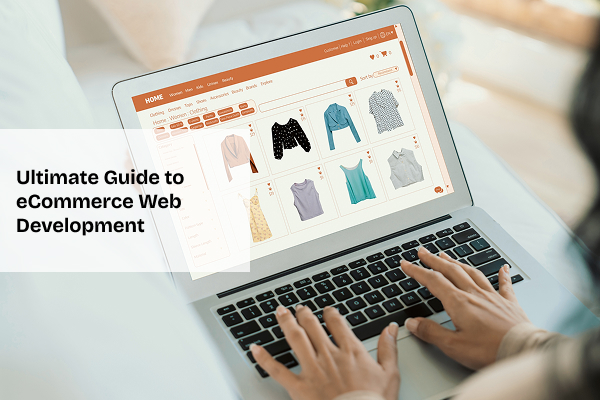E-commerce sales have been spiking for the last 10 years. We have found statistics that will shock you.
In 2021, the retail e-commerce sales amounted to approximately $5.2 trillion across the globe. This amount is estimated to increase to $8.1 trillion by the year 2026.
These figures surely look appealing, and you also want to develop your own eCommerce store to take advantage of this growing need.
But the question comes, what are the steps to develop an e-commerce website? Being a leading Custom E-commerce Development Services USA & Australia provider, we have met our experienced eCommerce developers and gathered a 16-step eCommerce web development process. Check it out.
16 Steps to Develop an eCommerce Website
1. Decide What You Want to Sell
In the modern world, the list of products that one can sell never ends. Understandably, one might want to sell all the categories right away. However, it is sensible to start from one category and then expand your way later. The first step, therefore, is to decide which product category you want to start selling.
2. Choose the Most Suitable Model
Not all products are meant for all types of customers. Some products may be suitable for business owners, while others may be more useful for the end consumer. Among the four models of eCommerce (Business-to-business, Business-to-consumer, Consumer-to-Business, and Consumer-to-Consumer), one must choose the model that suits their needs.
3. Select a Website Development Platform
This is where the eCommerce Web Development process starts. Numerous website builders or platforms in the market allow the user to build a custom website from scratch. According to the users’ requirements, one can choose from among the website builders like Wix, Magento, Squarespace, and many more.
4. Everything is in the Name
Recall any famous brand. Amazon, Starbucks, Alibaba, Apple, Samsung – what are the common things? The names are unique, short, and easy to remember and pronounce. These are the ideal characteristics of a brand name. The next step, therefore, is to decide upon a domain name and purchase it to avoid duplication and fraud.
5. Perfection Through Testing
Before moving ahead, it is advisable to test the tool that the user has developed thus far. It would be useless to put in all the effort for the tool to not work in the end.
6. Plan or No Plan, That is the Question
Although the website development platforms provide free services, they may not be enough to manage the entire eCommerce website. It is therefore advised to purchase a plan that is capable of holding the entire eCommerce website.
7. Keep the Competitors Close
Observe the websites of the competitors. One can observe what is the layout of their website, how well it performs, what features it holds, etc. The goal here is not to copy, but to understand the mechanism of the website.
8. Theme? Theme!
A website with no theme looks a little messy. A theme, when applied to the website, makes the entire website look more put-together. It makes it appear more presentable and imparts a professional impression.
9. Strategize!
Once the theme is ready, decide on the layout, purchase routes, page designs, etc., for your website. Make sure that the interface is attractive and engaging to add aesthetic points to your website.
10. Product Description is the Key!
Consumers will not buy the product if they do not know what it is. Describe the product details (dimensions, quantity, materials, possible allergens, etc.) in the description box to give the customers more information about the products.
11. Remember: People Prefer Options
In the digital world, people prefer to have more than one payment option. In addition to cash on delivery, offer them the options of Credit card, UPI, and net banking. More options minimize the cart abandonment rate.
12. Legalize!
Document and upload various policies (return policy, payment policy, refund policy, etc.) to make sure that your website runs without any hindrances. Make sure there are no loopholes and that every section is covered.
13. Remember, SEO = Visibility
Make every title unique to enhance the appearance of the website on search engines. You can use keywords in headings, URLs, image alt text, and on-page descriptions. The better keywords you use, the higher your visibility will be on any search engine.
14. Adjust & Accommodate
Make changes to accommodate a larger crowd of customers. You can do this by adding language options, currency options, time zone specifications, etc. When the customers feel comfortable, they will visit again for sure.
15. Quality Test Before You Go
A second test never hurt anyone. Test the functionality of every page and feature of the website to make sure that there are no bugs on the website. Remove any flaws, loopholes, or broken links discovered here.
16. Ready, Steady, Go Live!
That’s it! The website is now ready for launch. One can either release the website in one city/state or launch it worldwide, depending on the target market. At this stage, if you want to scale your business professionally, it’s time to hire a custom e-commerce developer in USA & Australia to ensure everything runs smoothly and efficiently.
FAQ About eCommerce Web Development
Which technology is the best for e-commerce website development?
WordPress offers an exceptionally scalable and adaptable foundation for developing highly expandable applications. It is a leading technology for developing e-commerce websites.
What are the things required to develop an e-commerce website?
To develop an e-commerce website, one will need:
- Product selection
- Domain name
- Hosting Plan
- Developer
It should, however, be noted that a lot of planning is required, along with the things mentioned above, in order to create an unbeatable eCommerce website.
Why should I hire a custom e-commerce developer?
Hiring a custom e-commerce developer ensures that your website is tailored to your business needs, scalable, secure, and fully optimized for both performance and user experience. This is especially crucial for businesses in USA & Australia looking to compete in the digital market.

